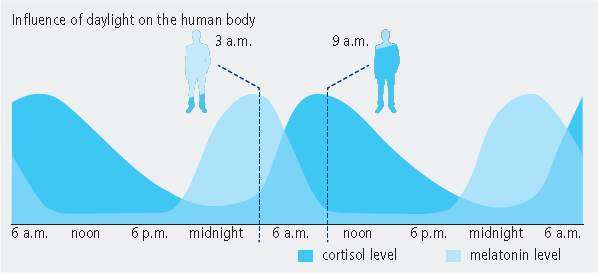Light Source Selection of Modern Office Lighting
Design Guide
We believe that a good lighting solution is based on the needs of customers and space, based on the designer’s ideas and creativity, through reasonable design, choosing the right light source, electrical technology and suitable lighting products, and through rich experience and Creative on-site coordination and continuous lighting operation management capabilities are achieved.
If we make a classification of the above six aspects: customer needs and space needs basically fall into the categories of “knowing what you want” and “knowing why”, and the rest is the “know how” problem of lighting designers.
Therefore, for a lighting design team, a reasonable combination should be the collaboration of designers and engineers, that is to say, lighting design is actually a synthesis of art and technology. As far as design concepts and expressions are concerned, there are thousands of people, and different people have different opinions. Therefore, this article only elaborates on how to meet the needs of space functions on a technical level, and solves the know how problem of luminaire selection from the perspective of a lighting engineer.
According to the characteristics and lighting needs of modern office spaces, we need to solve two problems when we carry out lighting design: lighting quantity and lighting quality.
Specifically:
Lighting quantity: illuminance level, illuminance distribution and uniformity, energy saving.
Lighting quality: color rendering, color temperature selection, glare and spatial brightness distribution.
These parameters have a basic requirement in the international lighting design standard IEC50034-2004, so I won’t repeat them here. From the perspective of lighting solutions, it mainly involves the selection of light sources, electrical technology and lamps.
The choice of light source technology is related to three important parameters: color rendering, color temperature and energy saving. Among them, the power of various light sources also affects the level of illumination.
- Color rendering
The international standard on the color rendering requirements of office places is that Ra is greater than 80.
- Color temperature
Regarding the basic knowledge of color temperature, previous studies and opinions believe that there is a relationship between the choice of color temperature and comfort as shown in the following figure:
Therefore, according to the current illuminance standard, office lighting usually chooses a color temperature of about 4000K. But there are also new academic studies on visual physiology and psychology that there is no such inevitable relationship between color temperature and visual comfort. Everyone can decide for themselves, but the author’s opinion is that the relationship is still established.
Speaking of color temperature, the LED era makes it possible to adjust and change color temperature. When it comes to LEDs, we may think of a buzzword: the harm of blue light, although this is not unique to LEDs.
So what exactly is the blue light hazard? Let’s look at two pictures:
Harmful blue light mainly refers to light with a wavelength of 464nm. Modern science has discovered that the three visual cells of the human eye are more sensitive to blue light, and this light physiologically inhibits the production of melatonin, making people more excited and not drowsy. (The secretion of melatonin can cause drowsiness).
It can be seen from the figure above that the incident angle of blue light affects the human body. It is worth noting that the blue light component in the reflected glare will have an uncomfortable effect on the human body. (So when we look at a blue object reflecting 464nm light, will it be uncomfortable? You can experiment by yourself.)
Whether blue light will cause harm is actually not a qualitative question, but a quantitative question. It depends on the amount of blue light contained in the light source spectrum. This is because the blue light is inherently contained in sunlight. The above picture is the change curve of the hormone cortisone and melatonin produced by the human body in a day under natural light (the hormone cortisone can stimulate the body’s metabolism).
Here comes the problem!
- How do we judge whether a light source produces blue light hazards?
It is recommended that designers adopt a relatively professional approach when choosing a light source: look at the light source spectrum and compare and analyze it with the sunlight spectrum. This can help you choose, especially for LED light sources that are currently on the market, good and bad. Don’t choose if the blue light component is obviously too high~~
In addition, we all have experience, and our visual perception is different if the light sources of different manufacturers with the same color temperature are marked, or the light sources of different types from the same manufacturer. One of the reasons is that the manufacturer’s label itself may be problematic, and we all use correlated color temperature to label. The same correlated color temperature light source has different spectral components. Therefore, looking at the light source spectrum is the most fundamental solution.
- If the blue light component (or insufficient) in the spectrum is lacking, wouldn’t it affect the state of people at work?
The answer is: yes! Why do the lights in many places make people drowsy? An environment with low color temperature is more likely to cause sleepiness? All have something to do with this. The solution is to look at the light source spectrum!
The figure below is the change curve of the spectral composition when the sunlight spectrum exhibits different color temperatures. You can see the principle of excellent temperature from it, and it can be used as a reference for comparison when looking at the light source spectrum (the best way to evaluate the color rendering of the light source is also through spectral analysis. ):
Back to the issue of Blu-ray. Since blue light can cause people to produce different physiological reactions, how to make rational use of this physiological reaction is a question worthy of consideration for designers.
The matter is divided into two parts. More blue light will cause physiological harm, and less blue light will reduce work efficiency. It is the best choice in the usual sense to find a balance between the two.
But there are special cases in everything: for the important three-shift workplace, increasing the blue light component, thereby inhibiting the production of human melatonin, keeping people excited, although it violates human physiological needs, it is a kind of Required design. This is why night shift places, especially control rooms and factories, usually use high color temperature light sources. Of course, the place where you usually go to work is still a little more human, so don’t use a light source with a high color temperature to stimulate everyone, haha.
As mentioned earlier, LED makes it possible to adjust the color temperature. When applied to indoors, due to insufficient daylight in the office space for a long time, people working and living under an unnatural light for a long time will inevitably produce some undesirable effects. Therefore, adjusting the color temperature according to time to simulate sunlight is also worthy of research, promotion and application.
- Energy saving
Energy-saving lighting requires an overall consideration throughout the lighting solution, not just how to choose the light source, or the issue of electrical appliances and lamps.







